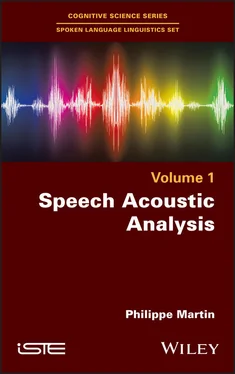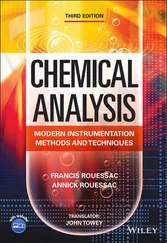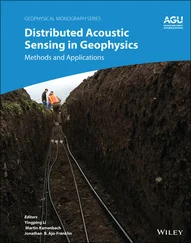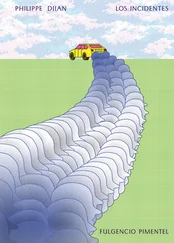9. Locating voiced fricatives [ʃi:æbsIlu:tlırıfju:zıstʊgoʋʊaIʊtIloʋʊnæt...Figure 6.10. Locating unvoiced stop consonants [efafanəvizaʒamɛləbarakyda]Figure 6.11. Locating unvoiced stop consonants [ʃi:æbsIlu:tlırıfju:zıstʊgoʋʊaIʊt...Figure 6.12. Locating voiced stop consonants [efafanəvizaʒamɛləbarakyda]Figure 6.13. Locating voiced stop consonants [ʃi:æbsIlu:tlırıfju:zıstʊgoʋʊaIʊtIl...Figure 6.14. Locating vowels [efafanəvizaʒamɛləbarakyda]Figure 6.15. Locating vowels and diphthongs [ʃi:æbsIlu:tlırıfju:zıstʊgoʋʊaIʊtIlo...Figure 6.16. Locating nasal consonants [efafanəvizaʒamɛləbarakyda]Figure 6.17. Locating nasal consonants [ʃi:æbsIlu:tlırıfju:zıstʊgoʋʊaIʊtIloʋʊnæt...Figure 6.18. Schematic diagram of automatic segmentation into phonesFigure 6.19. Example of on-the-fly segmentation with slowdown of the speech sign...Figure 6.20. Alignment by dynamic comparison (Dynamic Time Warping, DTW)Figure 6.21. Vowel [a]: Fourier spectrum wideband, narrowband and Prony’s spectr...Figure 6.22. Spectrogram from the beginning of the “Air de la Reine de la nuit” ...Figure 6.23. Prony spectrum of order 12, 10 and 8Figure 6.24. Prony spectrum of order 6, 4 and 2Figure 6.25. Prony spectrum of order 100 showing peaks corresponding to the harm...Figure 6.26. Comparison of Fourier and Prony spectrogramsFigure 6.27. Example of a recording level that is too low: the harmonics of the ...Figure 6.28. Example of a recording level that is too high: harmonic saturation ...Figure 6.29. Presence of constant frequency noise harmonics (musical accompanime...Figure 6.30. Effect of MP3 encoding-decoding on the narrowband representation of...Figure 6.31. Spectrograms at the same bandwidth for a male and female voice (11 ...
7 Chapter 7Figure 7.1. Repeated characteristic laryngeal vibration pattern as a function of...Figure 7.2. Patterns for another occurrence of vowel [a]Figure 7.3. Patterns for an occurrence of vowel [i]Figure 7.4. Effect of phase change on three harmonic components added with diffe...Figure 7.5. Definition of laryngeal (pulse) frequencyFigure 7.6. Example of a pitch curve displayed as a function of time and varying...Figure 7.7. Waveform (oscillographic curve) of a vowel [a]Figure 7.8. Oscillographic curve of a vowel [i] showing the effect of harmonic p...Figure 7.9. Manual measurements of laryngeal frequency from the vowel waveformFigure 7.10. Effect of amplitude variations on the measurement of periods by bia...Figure 7.11. Principle of F0 calculation by autocorrelationFigure 7.12. Non-linear preprocessing of the signal center clipping (a) and peak...Figure 7.13. Measurement of F0 from an analog narrowband spectrogram. To reduce ...Figure 7.14. Example calculation of a cepstrum: Fourier spectrum, logarithm of t...Figure 7.15. F0 detection by the spectral comb method. Teeth of the optimal comb...Figure 7.16. The sawtooth function and its spectrum used by SWIPE to detect F0Figure 7.17a. Pitch curve of the sentence “I’ve always found it difficult to sle...Figure 7.17b. Pitch curve of the sentence “I’ve always found it difficult to sle...Figure 7.18. Simultaneous display of the pitch curve and a narrowband spectrogra...Figure 7.19. Creaky segment with irregular pitch periods (vocal fry)Figure 7.20. Creaky segment with very long laryngeal periodsFigure 7.21. Creaky segment with laryngeal period pairing (pitch doubling)Figure 7.22. Spectrogram of a modal-diplophonic-modal sequenceFigure 7.23. Principle of speech signal decomposition by the Psola methodFigure 7.24. Slowing and speeding up speech through Psola decomposition/recompos...Figure 7.25. Slowing and speeding up speech through Psola decomposition/recompos...Figure 7.26. Modification of the fundamental frequency of speech through Psola d...Figure 7.27. Direct and inverse Fourier analysis of the phase vocoderFigure 7.28. F0 and spectrum modification by phase vocoder
8 Chapter 8Figure 8.1. Helmholtz resonators (source: University of Toronto, Department of P...Figure 8.2. Koening spectral analyzer (source: CNAM 12605)Figure 8.3. Sections of the vocal tract obtained by molding (Sanchez and Boë 198...Figure 8.4. Section showing the articulatory configuration for vowel [ə] (adapte...Figure 8.5. Single-tube vowel model [ə]Figure 8.6. Frequency response for a 17.5 cm 1-tube model, spectrogram, Fourier ...Figure 8.7. Two-tube model for oral vowelsFigure 8.8. Graphical resolution of the two-tube model of vowel [a] giving the f...Figure 8.9. Frequency response for a two-tube model, spectrogram, Fourier and Pr...Figure 8.10. Variations in anterior (5 to 7 cm 2) and posterior (0.5 to 3 cm 2) ca...Figure 8.11. Variations in the ratio of anterior (8 to 10 cm) and posterior (7 t...Figure 8.12. Two-tube models for different oral vowels and corresponding formant...Figure 8.13. Model with three tubes of [m] (based on Flanagan (1965))Figure 8.14. Distribution of formants and anti-formants for the nasal consonant ...Figure 8.15. Graphic resolution of the three-tube model of the nasal consonant [...Figure 8.16. Graphic resolution of the three-tube nasal vowel model [ã]. The red...Figure 8.17. Distribution of formants and anti-formants for the nasal vowel [ã]Figure 8.18a. Fourier and Prony spectrogram and spectra, nasal vowel [ã] above, ...Figure 8.18b. Fourier and Prony spectrogram and spectra, nasal vowel [ã] above, ...Figure 8.19. Model with n tubes obtained by segmentation of sagittal sections (M...
9 Appendix Figure A.1. Trigonometric circle
Figure A.2. Sine function sin (α)
Figure A.3. Cosine function cos (α)Figure A.4. Tangent function tg (α)Figure A.5. Cotangent function cotg (α)
1 Chapter 1 Table 1.1. Some examples of sound propagation speed in different materials at a ...
Table 1.2. Change in the frequency of the reference “A” over the centuries (sour...
Table 1.3. Frequencies of musical notes
Table 1.4. Correspondence between loudness and phons
2 Chapter 2Table 2.1. Milestones in speech recording processes 3
3 Chapter 6Table 6.1. Phonetic symbols for French and EnglishTable 6.2. Peak values of the Prony spectrum of order 12, 10 and 8Table 6.3. Peak values of the Prony spectrum of order 6, 4 and 2
4 Appendix Figure A.1. Trigonometric circle
Figure A.2. Sine function sin (α)
Figure A.3. Cosine function cos (α)Figure A.4. Tangent function tg (α)Figure A.5. Cotangent function cotg (α)
1 Cover
2 Table of Contents
3 Title page Spoken Language Linguistics Set coordinated by Philippe Martin Volume 1
4 Copyright First published 2021 in Great Britain and the United States by ISTE Ltd and John Wiley & Sons, Inc. Apart from any fair dealing for the purposes of research or private study, or criticism or review, as permitted under the Copyright, Designs and Patents Act 1988, this publication may only be reproduced, stored or transmitted, in any form or by any means, with the prior permission in writing of the publishers, or in the case of reprographic reproduction in accordance with the terms and licenses issued by the CLA. Enquiries concerning reproduction outside these terms should be sent to the publishers at the undermentioned address: ISTE Ltd 27-37 St George’s Road London SW19 4EU UK www.iste.co.uk John Wiley & Sons, Inc. 111 River Street Hoboken, NJ 07030 USA www.wiley.com © ISTE Ltd 2021 The rights of Philippe Martin to be identified as the author of this work have been asserted by him in accordance with the Copyright, Designs and Patents Act 1988. Library of Congress Control Number: 2020948552 British Library Cataloguing-in-Publication Data A CIP record for this book is available from the British Library ISBN 978-1-78630-319-6
5 Preface
6 Begin Reading
7 Appendix
Читать дальше












